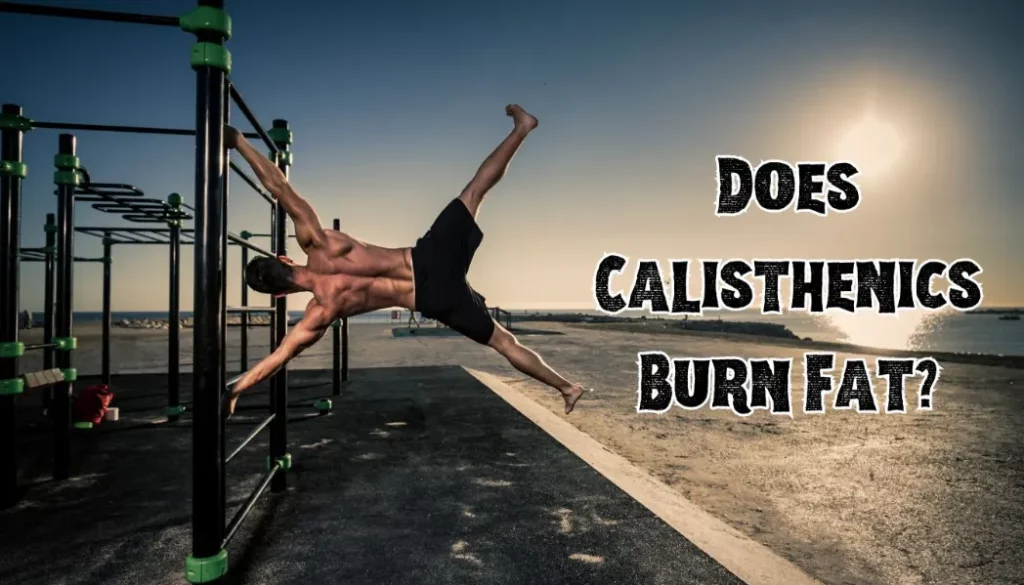Yes, calisthenics can effectively burn fat. These bodyweight exercises engage multiple muscle groups simultaneously, leading to higher energy expenditure and increased calorie burn. When structured as high-intensity interval training (HIIT), calisthenics becomes particularly powerful for fat loss—short bursts of intense exercise followed by active recovery periods enhance fat burning and improve metabolic function.
The beauty of calisthenics for fat burning lies in its versatility. You can easily adjust the intensity by changing the speed, volume, or complexity of movements, which helps maintain a high metabolic rate. Exercises like burpees, push-ups, pull-ups, and planks boost metabolism and create the calorie deficit necessary for burning fat.
For men over 40, calisthenics offers additional benefits. It helps combat the metabolic slowdown that naturally occurs with age while preserving lean muscle mass—crucial since muscle mass typically declines as we get older. This combination of fat loss and muscle retention improves overall body composition and keeps the heart healthy.
Key Takeaways
- Multi-muscle engagement – Calisthenics exercises work multiple muscle groups at once, maximizing calorie burn and energy expenditure
- HIIT compatibility – Structuring calisthenics as high-intensity intervals significantly enhances fat burning and metabolic function
- Adjustable intensity – Easy to modify speed, volume, and complexity to maintain optimal fat-burning heart rate zones
- Metabolic boost – Regular calisthenics workouts increase metabolism, creating the calorie deficit needed for fat loss
- Age-friendly – Particularly beneficial for those over 40, helping combat age-related metabolic slowdown
- Muscle preservation – Burns fat while maintaining or building lean muscle mass, improving overall body composition
The Science Behind Calisthenics and Fat Loss

Let me paint you a picture. You’re in your garage at 6 AM, sweat dripping, lungs burning, pushing through another set of burpees. No fancy equipment, no gym membership—just you, gravity, and the stubborn determination to torch that extra padding around your midsection.
This is calisthenics in its raw form, and it’s one of the most effective ways to burn fat I’ve encountered in my years of training.
The magic happens because calisthenics forces your body to work as a complete system. Unlike isolation exercises that target single muscles, movements like burpees activate your chest, legs, triceps, and core simultaneously. This full-body recruitment creates what exercise scientists call “metabolic stress”—your body’s energy systems working overtime to fuel all those muscles at once.
Why Calisthenics Excels at Fat Burning
Think about traditional cardio for a moment. You hop on a treadmill, zone out, and burn calories at a steady rate. It works, sure, but calisthenics operates on an entirely different level. When you perform a circuit of push-ups, mountain climbers, and jump squats, you’re not just burning calories during the workout—you’re creating an afterburn effect that keeps your metabolism elevated for hours afterward.
This phenomenon, known as excess post-exercise oxygen consumption (EPOC), means your body continues torching calories long after you’ve toweled off and hit the shower. I’ve measured my own metabolic rate after intense calisthenics sessions, and the numbers don’t lie—the calorie burn continues well into the day.
Building Your Fat-Burning Calisthenics Routine

Here’s where most people go wrong—they think more is always better. But effective calisthenics for fat loss isn’t about grinding yourself into dust. It’s about intelligent programming that balances intensity with recovery.
Start with compound movements that engage large muscle groups:
- Burpees (the king of calorie torchers)
- Push-up variations
- Pull-ups or assisted pull-ups
- Mountain climbers
- Jump squats
- Plank variations
The key is structuring these exercises into circuits that keep your heart rate elevated while challenging your muscles. A simple format I’ve used successfully: 30 seconds of work, 15 seconds of rest, cycling through 5-6 exercises for 3-4 rounds.
The HIIT Advantage in Calisthenics
HIIT-style calisthenics represents the sweet spot for fat loss. By alternating between maximum effort and active recovery, you create metabolic chaos—in the best possible way. Your body doesn’t know whether to prioritize the aerobic or anaerobic energy systems, so it fires up both, resulting in maximum calorie burn.
I remember working with a 45-year-old client who’d tried everything to lose his gut. Three months of HIIT calisthenics, three times per week, and he dropped 20 pounds while actually gaining muscle definition. No magic pills, no extreme diets—just consistent, intense bodyweight training.
Calisthenics for Different Age Groups

The Over-40 Advantage
If you’re north of 40, calisthenics becomes even more valuable. As we age, we lose about 0.5% of muscle mass per year—a process that accelerates after 50. Traditional cardio does nothing to combat this muscle loss, but calisthenics builds and preserves lean tissue while burning fat.
The metabolic slowdown that comes with age? Calisthenics fights that too. By maintaining and building muscle through bodyweight training, you keep your resting metabolic rate higher, meaning you burn more calories even while sleeping.
For men over 40, I recommend starting with modified versions of exercises and gradually increasing intensity. Can’t do a full push-up? Start on your knees or against a wall. The progression is what matters, not where you begin.
Creating a Calorie Deficit Through Movement
Fat loss ultimately comes down to energy balance—burn more calories than you consume. Calisthenics excels here because it’s accessible and sustainable. You can perform a fat-burning workout anywhere, anytime, without equipment or gym fees.
A typical 30-minute calisthenics session can burn 200-400 calories, depending on intensity and body weight. Factor in the afterburn effect, and you’re looking at significant calorie expenditure. Combine this with proper nutrition, and fat loss becomes inevitable.
The Mental Game of Fat Loss

Here’s something rarely discussed—the psychological benefits of calisthenics for fat loss. When you master a movement using only your body weight, it builds a different kind of confidence. You become more aware of your body, more mindful of how it moves and feels.
This mindfulness extends beyond the workout. You start making better food choices, sleeping more consistently, managing stress more effectively. The physical practice becomes a catalyst for broader lifestyle changes that support fat loss.
Common Mistakes to Avoid
I’ve seen countless people sabotage their fat loss efforts with these errors:
Going too hard, too fast – Your body needs time to adapt. Start with 2-3 sessions per week and build gradually.
Ignoring form for speed – Poor form leads to injury and reduced effectiveness. Master the movement before increasing tempo.
Neglecting recovery – Fat loss happens during rest, not just during workouts. Allow adequate recovery between sessions.
Expecting overnight results – Sustainable fat loss takes time. Focus on consistency over intensity.
Programming for Maximum Fat Loss
An effective fat-burning calisthenics program should include:
- Frequency: 3-4 sessions per week
- Duration: 20-40 minutes per session
- Intensity: 70-85% of maximum heart rate during work intervals
- Variety: Rotate exercises to prevent adaptation
- Progression: Gradually increase difficulty or volume
Here’s a sample week:
- Monday: Upper body focus (push-ups, dips, pull-ups)
- Wednesday: Lower body focus (squats, lunges, jump variations)
- Friday: Full body HIIT circuit
- Optional Saturday: Active recovery with light movement
Nutrition and Calisthenics: The Dynamic Duo
While calisthenics burns fat effectively, you can’t out-train a bad diet. Focus on whole foods, adequate protein to preserve muscle mass, and a moderate calorie deficit. Meal prep can be a game-changer for consistency.
I’ve found that people who combine calisthenics with mindful eating see the best results. Track your intake for a few weeks to understand your patterns, then adjust based on your progress and energy levels.
Measuring Progress Beyond the Scale
The scale tells only part of the story. With calisthenics, you might gain muscle while losing fat, resulting in minimal weight change despite significant body composition improvements. Track progress through:
- Body measurements
- Progress photos
- Performance metrics (reps, hold times)
- Energy levels
- How clothes fit
Advanced Fat-Burning Techniques
Once you’ve mastered the basics, incorporate these advanced strategies:
- Mechanical drop sets – Progress from harder to easier variations within the same set
- Density training – Complete more work in less time
- Complex movements – Combine exercises into flowing sequences
- Isometric holds – Add static holds to increase time under tension
The Long-Term Perspective
Calisthenics for fat loss isn’t a quick fix—it’s a sustainable lifestyle approach. Unlike crash diets or extreme programs, bodyweight training can be maintained indefinitely. The skills you develop, the strength you build, the metabolic improvements you achieve—these benefits compound over time.
I’ve been doing calisthenics for over a decade, and at 38, I’m leaner and stronger than I was at 25. The difference? Consistency and intelligent programming, not extreme measures.
Troubleshooting Plateaus
Hit a fat loss plateau? Don’t panic. Your body adapts to any stimulus over time. Break through by:
- Changing exercise variations
- Adjusting work-to-rest ratios
- Incorporating new movement patterns
- Reassessing your nutrition
- Adding a deload week for recovery
Remember, plateaus are normal. They’re your body’s way of saying it’s adapted to the current stimulus and needs a new challenge.
Building a Sustainable Practice
The best fat loss program is one you’ll actually do. Calisthenics succeeds because it removes barriers—no commute to the gym, no expensive equipment, no waiting for machines. You can train in your living room, backyard, or hotel room while traveling.
Start where you are, use what you have, do what you can. Even 10 minutes of focused calisthenics beats an hour of half-hearted gym wandering. Quality trumps quantity every time.
Final Thoughts
Calisthenics burns fat effectively because it combines strength training, cardiovascular conditioning, and metabolic enhancement in one efficient package. Whether you’re 25 or 65, beginner or advanced, bodyweight training offers a path to sustainable fat loss and improved body composition.
The journey won’t always be easy. Some days you’ll feel like a superhero, others like you’re moving through molasses. But if you stay consistent, trust the process, and listen to your body, calisthenics will transform not just your physique but your entire relationship with fitness.
Remember—every push-up, every burpee, every drop of sweat is an investment in a leaner, stronger, more capable version of yourself. The fat will burn, the muscle will build, and you’ll discover what your body is truly capable of when you strip away the excuses and get to work.
References
- https://www.ncbi.nlm.nih.gov/pmc/articles/PMC6719505/
- https://journals.lww.com/acsm-msse/fulltext/2019/03000/high_intensity_interval_training_for_health_and.7.aspx
- https://www.sciencedirect.com/science/article/pii/S2095254618301005
- https://pubmed.ncbi.nlm.nih.gov/28401638/
- https://www.frontiersin.org/articles/10.3389/fphys.2017.00483/full
This content has been rigorously reviewed for accuracy and reliability. We prioritize sourcing data from authoritative, peer-reviewed journals, academic institutions, and verifiable industry leaders to ensure you receive the most trustworthy information available.
100% Independent
No paid positive reviews. Our data is unbiased and manufacturer-independent.
Stress Testing
Products are rigorously tested in-gym environments, not just unboxed in a studio.
Evidence-Based
Claims are cross-referenced with peer-reviewed medical literature.
MEDICAL DISCLAIMER: Content is for informational purposes only. Consult a physician before starting any workout. You assume full responsibility for your safety.
